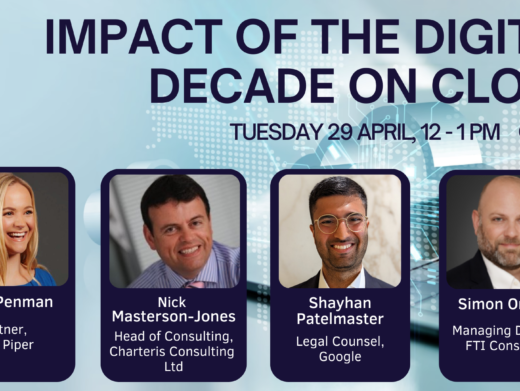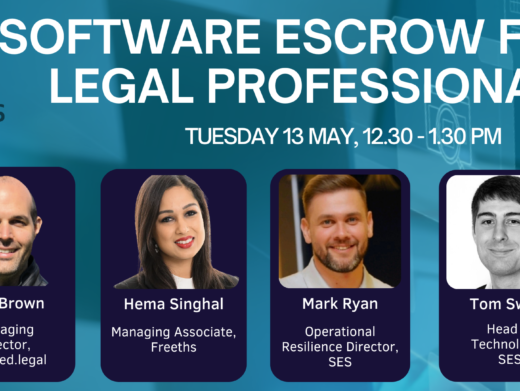
Andrew Holroyd is Managing Partner at Jackson & Canter, Liverpool and a Council Member of the Law Society.
I have often wondered who reads the articles in this magazine. Some I’m sure are not only computer literate but are actual enthusiasts for IT and cannot get enough information about the latest gadgets and clever programs. Some are obviously heavily into intellectual property and the wonderful world of cyber-notaries and the like, trying to keep up with a fast-moving legal world.
I have a confession to make. Although it is nicely produced and well set out, this magazine is always the last in the reading round to be torn out of its wrapper. The clever articles about new hardware and fancy programs make me nervous. What part of this brave new world is passing me by?
Yes. I’m a reluctant member of this Society and reader of this publication because I know that I cannot afford to be left behind. Whether I like it or not, I have to come to terms with IT or see my legal business gradually wither and die as others get to grip with new working practices whilst mine does not. And here you do come across new ideas and get a glimpse of what is going on and what other lawyers are doing with IT.
The Problems
This then is my own interest in IT; how to make it work for me in my own firm. And here you meet the first problem. Which elements of the world of IT are you going to use? With a bit of imagination, so many different applications are possible that you find it difficult to know where and how to start. It is a communications revolution, a processing of work revolution, a marketing and information revolution – all rolled into one. All of them are difficult to get your head around and that is even before the technical specifications of hardware and software are considered.
These problems are even more difficult for the small and medium-sized firms. The large firm will have the resources to bring in expertise from outside. Small firms may be fortunate enough to have an individual who has the enthusiasm, time and patience to suss things out but otherwise firms have to rely largely on suppliers in the marketplace peddling their own wares, or consultants who seem very expensive.
Three Steps to Solutions
So how do we start to make sense of this new world and make it work for us in our businesses?
Start with your business plan and decide where you are going, the resources you possess and will need to get there and how your plan is to be implemented. IT will be one important element in your strategy but it is only a servant in the means of achieving your goals.
Our firm is on five sites and yet we wish to run a fully departmentalised firm with expertise capable of being accessed at each site. We wish to have better control of work being done by fee-earners and introduce standardised methods of working. We wish to cut overheads with fee-earners producing more of their own documents and letters. We wish to have a well motivated and trained fee-earning and ancillary staff, working together in teams to meet the requirements of our customers. I could go on but you get the point.
How can IT be used to meet these aims and objectives? What infrastructure and equipment do I need to make all this happen?
The latter question is the part that we all get hung up on. Yet I would submit that it is almost the least important part of the planning process. It is certainly the bit that takes the least time. An order can be placed without too much difficulty if you can work out how to pay for it. Before you know it, shining spotlessly clean bits of plastic start sprouting on desks all over the place. Oh I know we can be misled and can buy the wrong stuff. Care has to be taken to ensure the IT can do the jobs you planned. But in truth the last and most difficult part of the process is about to begin. Unfortunately it is also the most neglected.
The business plan utilising the IT has to be implemented and made to work. It is actually making the best use of what you have that is actually the most challenging part of the process.
How many of us can really say that we have maximised the benefits from the IT that we have already up and running in our offices. Perhaps one or two enthusiastic fee-earners have. But what about the reluctant rest. Have we given up on them, decided that it is just not worth the effort? We make the mistake of thinking that somehow our staff will miraculously embrace the full potential of the equipment effortlessly. They will be happy to change the habits of a lifetime (or part lifetime) and all this while trying to manage the demands of their caseload and their clients.
Of course it doesn’t happen. Even if they were willing to learn, they are far too busy to find the time. After all the dictating machine rules, the best piece of office equipment ever invented to get the file off your desk onto someone else’s – whether the job has been done properly or not. Let your secretary sort out the mess – you don’t want to have to get the job right yourself!
Perhaps I am too cynical. However, there is no point spending the money on the equipment without a proper implementation plan to make full use of the investment. This implementation plan will involve resources in terms of money and manpower, a great deal of time and lots of training of one sort or another. And it us unlikely to work without the involvement of staff at all levels in the practice.
Why not get together your most enthusiastic fee-earners and ancillary staff in an IT committee to develop the plan of campaign. Listen to their ideas and involve them in the process. Train a few key people and use them to train the rest of the staff in small groups.
The secretaries will generally be much easier to deal with than fee-earners. Make sure therefore that each fee-earner has a few simple tasks to accomplish using IT and gradually extend the jobs that they are expected to do. Our fee-earners were all asked first to open their own client files and keep the client database up to date. Now they are being asked to enter their own time recording as they go through the day and so on.
But it’s not just the fee-earners whose role and way of working will change. Each staff member has to know clearly what is expected of them. Procedures have to be put in place to monitor performance. If some have not cottoned on, a further round of training will be needed and then probably a third. Never take it for granted that implementation has occurred for, even if it did once, people may well have lapsed back into old habits. Remember you are trying to change the habits of a lifetime and that is no mean feat.
Management Needed
All this takes a great deal of management time and effort. But the benefits for the business will more than repay the effort involved – at least until the next great leap forward occurs. Unfortunately nothing stands still and the escalator seems to move faster and faster all the time. There are signs that IT is becoming slightly more user friendly (or am I too optimistic). But there is no alternative but to get on board and keep running with it.
So happy (or otherwise) reading of this magazine. You can’t afford to be without it but do not assume for an instant that understanding its articles will achieve benefits for your business. Only darned hard work will do that.
Happy managing!




